African honeysuckle
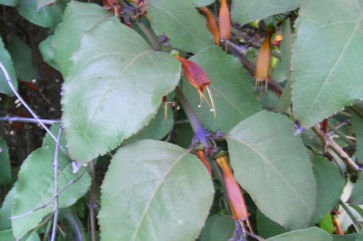
A subtropical plant. It grows on the edge of mountain and river forests. It can tolerate some frost but does not thrive in cold conditions. It suits hardiness zones 8-10.
Also known as:
Iliminza, Indomela, Lebetsa, Liminta, Londomela, Morebve, Mubaratsotsa, Mutapahuro, Notsung, Songodorere, Tree fuchsia, Umbinda, Umbindza, Umbinta, Umbinza, Umbita, Umhlahlakanya, Umminta, Unobibi, Unondomela, White olive, Wild fuchsia
Synonyms
- Halleria abyssinica Jaub. & Spach
Edible Portion
- Fruit, Flowers - nectar
Where does African honeysuckle grow?
Found in: Africa, Angola, Australia, Botswana, Central Africa, Congo, East Africa, Eswatini, Ethiopia, Lesotho, Malawi, Mozambique, Slovenia, South Africa, Southern Africa, Sudan, Swaziland, Yemen, Zambia, Zimbabwe
Notes: There are 4-5 Halleria species. They grow in southern Africa.
Status: Fruit are eaten especially by children.
Growing African honeysuckle
Cultivation: Plants can be grown from seed. The flesh should be removed from the seeds. These take about 6 weeks to germinate. Plants can also be grown from cuttings. These are best treated with a rooting hormone. Roots develop in about 6 weeks. Plants can also be grown by layering. A spacing of 1-4 m is suitable.
Edible Uses: The fruit are eaten raw. They are very sweet. They are used in fruit salads. They can be stored. The flowers are sucked for their nectar.
Production: Trees can produce fruit after 2 years but yields increase in later years. In times of famine the green fruit are harvested and stored in a hole for several days to ripen.
Nutrition Info
per 100g edible portion| Edible Part | Energy (kcal) | Protein (g) | Iron (mg) | Vitamin A (ug) | Vitamin c (mg) | Zinc (mg) | % Water |
|---|---|---|---|---|---|---|---|
| - | - | - | - | - | - |
African honeysuckle Photos

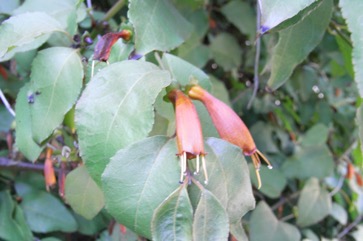
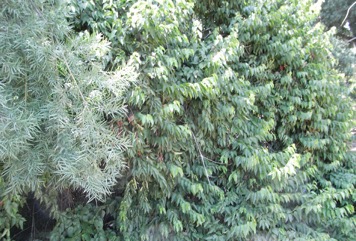
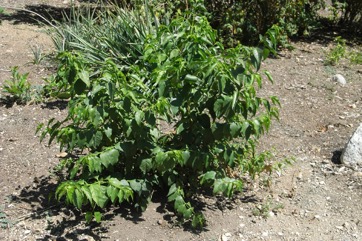
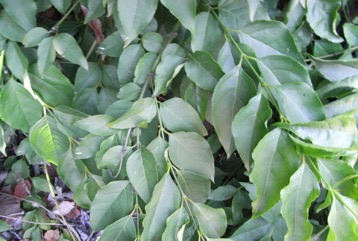
References
Cundall, P., (ed.), 2004, Gardening Australia: flora: the gardener's bible. ABC Books. p 670
Etherington, K., & Imwold, D., (Eds), 2001, Botanica's Trees & Shrubs. The illustrated A-Z of over 8500 trees and shrubs. Random House, Australia. p 368
Facciola, S., 1998, Cornucopia 2: a Source Book of Edible Plants. Kampong Publications, p 229
Fox, F. W. & Young, M. E. N., 1982, Food from the Veld. Delta Books. p 340
Glowinski, L., 1999, The Complete Book of Fruit Growing in Australia. Lothian. p 184
Guillarmod, J., 1971,
Hibbert, M., 2002, The Aussie Plant Finder 2002, Florilegium. p 119
http://plants.newplant.co.za/
Joffe, P., 2007, Creative Gardening with Indigenous Plants. A South African Guide. Briza. p 76
John, L., & Stevenson, V., 1979, The Complete Book of Fruit. Angus & Robertson p 292
Long, C., 2005, Swaziland's Flora - siSwati names and Uses http://www.sntc.org.sz/flora/
Lyle, S., 2006, Discovering fruit and nuts. Land Links. p 234
Mason, 1971,
Palgrave, K.C., 1996, Trees of Southern Africa. Struik Publishers. p 822
Palmer, E and Pitman, N., 1972, Trees of Southern Africa. Vol. 2. A.A. Balkema, Cape Town p 1987
Peters, C. R., O'Brien, E. M., and Drummond, R.B., 1992, Edible Wild plants of Sub-saharan Africa. Kew. p 185
Reis, S. V. and Lipp, F. L., 1982, New Plant Sources for Drugs and Foods from the New York Botanical Garden herbarium. Harvard. p 275
Ruiters-Welcome, A. K., 2019, Food plants of southern Africa. Ph.D. thesis. Univ. of Johannesburg p 104
Schatz, G.E., 2001, Generic Tree Flora of Madagascar. Royal Botanical Gardens, Kew and Missouri Botanical Garden. p 387 (Genus)
Schmidt, E., Lotter, M., & McCleland, W., 2007, Trees and shrubs of Mpumalanga and Kruger National Park. Jacana Media p 600
Sp. Pl. 2:625. 1753
Swaziland's Flora Database http://www.sntc.org.sz/flora
van Wyk, B, van Wyk, P, and van Wyk B., 2000, Photographic guide to Trees of Southern Africa. Briza. p 173
Venter, F & J., 2009, Making the most of Indigenous Trees. Briza. p 188
Vinnicombe, 1976,
von Breitenbach, F., 1985, Southern Cape Tree Guide. Department of Environment Affairs, Forestry Branch. Pamphlet 360 Pretoria p 31
White, F., Dowsett-Lemaire, F. and Chapman, J. D., 2001, Evergreen Forest Flora of Malawi. Kew. p 549
World Checklist of Useful Plant Species 2020. Royal Botanic Gardens, Kew
www.zimbabweflora.co.zw 2011